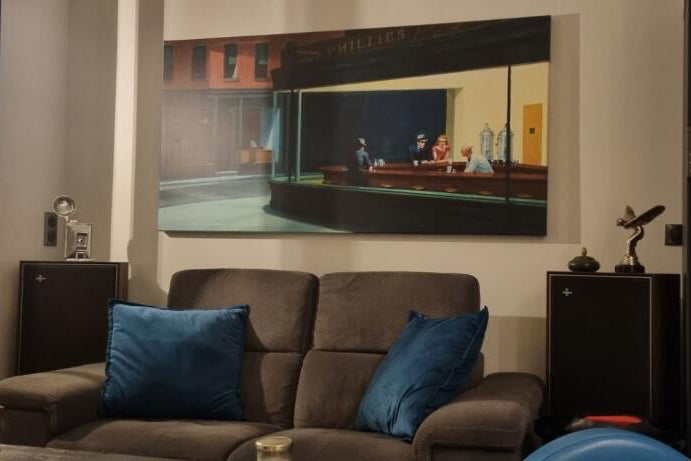Art print | Above the Taos Valley - Eanger Irving Couse


View from behind

Frame (optional)
Introduction captivante
The artwork "Above the Taos Valley" by Eanger Irving Couse is a true ode to the natural beauty and culture of Indigenous peoples of America. Painted in the early 20th century, this piece transports the viewer to an enchanting landscape, where majestic mountains blend with an infinitely deep sky. Couse, through his brushwork, manages to capture the very essence of the Taos Valley, a place that has inspired many artists and writers. The light, colors, and shapes combine to create an atmosphere that is both serene and vibrant, inviting introspective contemplation. The art print of this work allows you to rediscover this magic and experience it within your own living space.
Style and uniqueness of the work
Eanger Irving Couse's style is distinguished by its impressionist approach, where light plays a central role. In "Above the Taos Valley," Couse uses fluid brushstrokes and rich color palettes to depict the nuances of nature. Warm, earthy tones evoke the warmth of the setting sun, while the shadows of the mountains add a depth and dimension that seem almost tangible. The artist succeeds in establishing a dialogue between the sky and the earth, creating a visual harmony that captivates the eye. The balanced composition, with its gentle lines and organic shapes, invites visual exploration, where each detail tells a story. Couse manages to transcend simple representation to offer a sensory experience, an immersion into a world where nature and the human spirit meet.
The artist and his influence
Eanger Irving Couse, born in 1866, is one of the pioneers of the Taos Artists movement, a group of artists who sought to capture the spirit of the American Southwest. His work is deeply influenced by his fascination with Native American culture, which he had the opportunity to explore during his stays in Taos. Couse was able to establish a bridge between artistic representation and the reality of the lifestyles of Indigenous peoples, paying homage to their culture while enriching the artistic landscape.

Matte finish

View from behind

Frame (optional)
Introduction captivante
The artwork "Above the Taos Valley" by Eanger Irving Couse is a true ode to the natural beauty and culture of Indigenous peoples of America. Painted in the early 20th century, this piece transports the viewer to an enchanting landscape, where majestic mountains blend with an infinitely deep sky. Couse, through his brushwork, manages to capture the very essence of the Taos Valley, a place that has inspired many artists and writers. The light, colors, and shapes combine to create an atmosphere that is both serene and vibrant, inviting introspective contemplation. The art print of this work allows you to rediscover this magic and experience it within your own living space.
Style and uniqueness of the work
Eanger Irving Couse's style is distinguished by its impressionist approach, where light plays a central role. In "Above the Taos Valley," Couse uses fluid brushstrokes and rich color palettes to depict the nuances of nature. Warm, earthy tones evoke the warmth of the setting sun, while the shadows of the mountains add a depth and dimension that seem almost tangible. The artist succeeds in establishing a dialogue between the sky and the earth, creating a visual harmony that captivates the eye. The balanced composition, with its gentle lines and organic shapes, invites visual exploration, where each detail tells a story. Couse manages to transcend simple representation to offer a sensory experience, an immersion into a world where nature and the human spirit meet.
The artist and his influence
Eanger Irving Couse, born in 1866, is one of the pioneers of the Taos Artists movement, a group of artists who sought to capture the spirit of the American Southwest. His work is deeply influenced by his fascination with Native American culture, which he had the opportunity to explore during his stays in Taos. Couse was able to establish a bridge between artistic representation and the reality of the lifestyles of Indigenous peoples, paying homage to their culture while enriching the artistic landscape.










